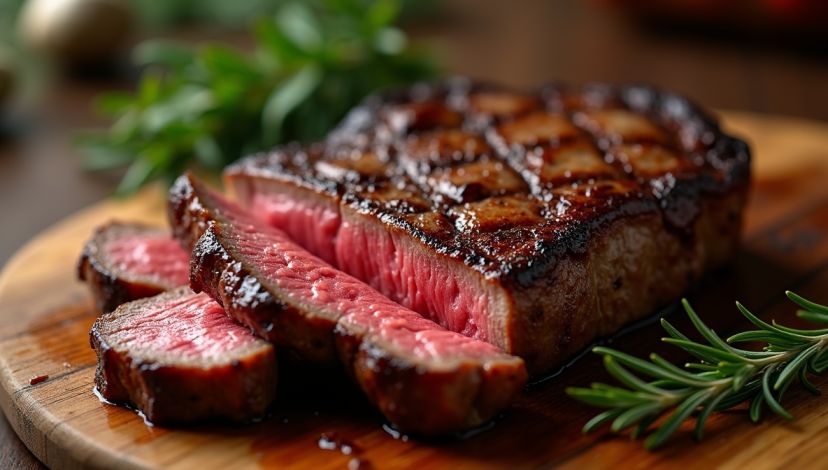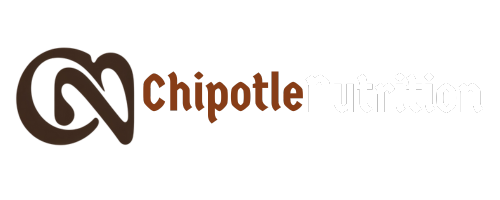How Much Protein In Steak: Nutrition Facts & Benefits

Steak is a tasty and loved form of protein that most people in the world take. If you are curious about how much protein in steak you get from different cuts and serving sizes, this blog post will provide detailed insights. Steak is reputed to be a high provider of protein which is vital in building muscles, repairing muscles and good health in general. Nevertheless, the numbers of proteins may also differ owing to the kind of steak and the type of preparation used.
Table of Contents
By learning about the amount of proteins in steak, you will make a better plan regarding your meals and will not be hungry as often, particular in your case, when you have to have more exercises or lose weight. This post will address some frequently asked questions about steak protein, compare varieties of different cuts to each other, and how the addition of steak to the diet helps in terms of nutrition.
Key Points:
- Steak is a protein food which varies according to the type of cut.
- Steak boasts the presence of protein which helps to build muscles and repair them.
- The protein level of steak assists with nutrition health planning.
How Much Protein Does The Various Steak Cuts Have?
A large portion of the nutritional differences found in the various beef cuts is caused by the difference in the content of fat and water. Approximately, 100 gram each of these cuts has approximately 20 to 30 grams of the essential nutrients. Let us say that a 200-gram serving of tenderloin contains about 62 grams of this valuable macronutrient. Such other choices as rib eye and sirloin contain a significant proportion as well, though there is a minimal variance based on fat concentration.
Below is some comparison of protein content of popular steaks per 100:grams:
| Steak Cut | Protein (g) | Fat (g) | Calories |
| Tenderloin | 28.25 | 10.10 | 212 |
| Rib Eye | 28.04 | 11.70 | 225 |
| Top Sirloin | 30.37 | 7.80 | 200 |
| Chuck Arm Roast | 33.02 | 8.70 | 219 |
Top sirloin may also be more nutritious than rib eye although you can observe that it has less fat. These meat varieties are usually packed with important nutritional components, and hence a good way of aiding a productive and healthy diet.
What is the Implication of Cooking Method on the Content of Protein in Steak?
The preparation of the meat may influence nutritional value and content of important nutrients consumed. Water loss also occurs during cooking making the nutrient content per gram high. Take an example of raw beef that contains few nutrients per 100 grams compared to cooked beef, merely because of the cooking procedure that leaves us with lower-weight water content.
The most common ways of cooking are grilling, broiling, pan-searing and roasting. Broiling and grilling are likely to preserve more protein and cut fat, whereas frying might add additional fat. It is worth mentioning here that some nutrients may be destroyed by being overcooked, yet in proteins, this doesn vigilance in anything.
Example:
An average 200-gram broiled tenderloin contains approximately 62 grams of protein but when the same weight is raw, there would be a few grams less because of the water content1. Thus, protein is not highly reduced by cooking but it is rather concentrated.
How Are Protein in Steak Healthy?
Steak protein has some health properties:
- Muscle growth and repair: The steak protein consists of all the elements of the essential amino acids that are required in muscle formation. This is suitable to the athlete and active people.
- Weight Loss: High-protein foods such as steak have a high filling factor and keep you fuller, lessen overeating.
- Micronutrients: Steak has calcium, iron, zinc in abundance in addition to protein which facilitates energy as well as immunity.
Nutrients which are present in this type of beef are deemed to be of high biological value that is, they are employed capaciously by the body. This kind of meat is a valuable source of daily nutrients and provides lots of health benefits.
What Is The Amount Of Steak You Need To Have To Nourish Daily Protein?
The required amount about exercise depends on the age, sex, activity level of an individual but as a rule of thumb, women need around 46 grams and men around 56 grams of this essential nutrient in a day. Grilled beef has a fair amount of 200 grams of beef as it can be a serving of more than 60 grams; therefore this can cover or surpass these nutritional requirements of an individual under a day.
The approximate steak meals and protein content is provided in a table here:
| Serving Size (grams) | Protein (grams) | % Daily Value (56g protein) |
| 100 | 28-30 | 50-54% |
| 150 | 42-45 | 75-80% |
| 200 | 56-62 | 100-110% |
Note: One should make sure that the consumption of steak is accompanied by other protein products and nutrients. Too much red meat consumption must be avoided to maintain the health of the heart.
How Do Steak Protein Compare To Protein Sources?
Steak protein is one of the complete proteins in that, it is made up of all the nine essential amino acids. Steak includes greater quantities of vitamin B12, iron and zinc, compared to the plant based proteins, which are less concentrated in the vegetarian foods.
The comparison in the contents of protein and its advantages in steak, chicken breast, and lentils within 100 grams is as follows:
| Protein Source | Protein (g) | Fat (g) | Key Nutrients |
| Beef Steak | 28-30 | 7-12 | Iron, B12, Zinc |
| Chicken Breast | 31 | 3.6 | Niacin, B6 |
| Lentils | 9 | 0.4 | Fiber, Folate, Iron |
Steak contains more fat and calories as well as has a higher content of some vitamins and minerals. Steak is a very useful source of high-protein, micronutrients. Nevertheless, nutrition can be balanced by mixing foods that contain different sources of protein.
Tip: When you want to have steak, pick lean cuts and moderate sizes.
Conclusion
Awareness of the amount of this nutrient that you take as beef enables you to make wise dietary choice. Beef gives a high-quality nutriment with a content of 20-30 grams every 100 grams contingent upon the cut. Cooking might make the concentration of the nutrients to be a bit less but this does not change the nutritional value too much. This beef consumption can help you get your muscles healthy, have a sense of satiety, and they can provide you with all the necessary necessary vitamins and minerals.
As a component of a balanced diet and in combination with other source of nutrients, as long as you monitor the size of the portions, you will be able to take advantage of the said benefits without the excess fat and calories. Beef is a sweet, and healthy food that you will enjoy as a part of your diet no matter it is tenderloin, rib eye, or sirloin.
FAQ’s
Will steak protein work in building up muscles?
Certainly, this cut of beef provides a significant amount of essential amino acids, which play a vital role in muscle building and body recovery after exercise.
What is the amount of protein contained in a 3-ounce steak?
A steak usually between 3 ounces (approximately 85 grams) to 9 ounces (approximately 250 grams) each, will have about 23-25 grams of protein in it (depending upon the cut).
Is steak complete protein?
Steak is a complete protein, yes, it has the full amount of amino acids.
Does the cooking process deplete steak with protein?
Protein is highly concentrated by cooking, since water is removed, although it does not cause much loss in the amount of total protein.
What is the most protein rich steak cut?
Rib eye or tenderloin contain a little less protein as compared with top sirloin or chuck arm pot roast.
Latest Posts

Chipotle Nutrition – Your go-to guide for calories, healthy choices, and balanced meals at Chipotle.
TOP NEWS
© Copyright 2025 Chipotle Nutrition. All rights reserved













No Comments